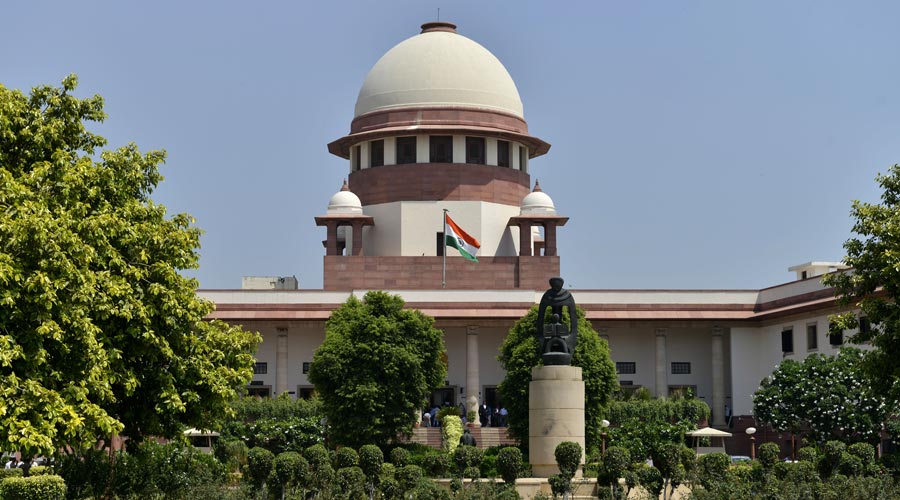The Supreme Court has said incoherent judgments have a serious impact on the dignity of judicial institutions and suggested guidelines based on a formula to be followed by the constitutional courts while writing verdicts.
The top court said that to ensure accessibility to verdicts, especially for those with disabilities, all judicial institutions must endeavour that the judgments and orders being published by them do not carry improperly placed watermarks as they end up making the documents inaccessible for those with visual disabilities who use screen readers to access them.
A bench of Justices D.Y. Chandrachud and A.S. Bopanna, which set aside an order of Himachal Pradesh High Court on the ground that it was incomprehensible, said “the purpose of judicial writing is not to confuse or confound the reader behind the veneer of complex language”.
The apex court passed the verdict on August 16 on an appeal filed by the State Bank of India and others in a matter arising out of disciplinary action against an employee.
The top court said: “…Although it is unfortunate that we have to set aside the impugned judgment and direct its remand due to its incoherence, we have taken the opportunity to lay out the discussion on judgment writing. Incoherent judgments have a serious impact upon the dignity of our institutions.”
The Supreme Court added that though it had laid down some broad guidelines, individual judges can indeed have different ways of writing judgments and continue to have variations in their styles of expression.
“The expression of a judge is an unfolding of the recesses of the mind. However, while recesses of the mind may be inscrutable, the reasoning in judgment cannot be. While judges may have their own style of judgment writing, they must ensure lucidity in writing across these styles,” the Supreme Court said in the verdict uploaded on Wednesday on its website.
It said judgment writing was a layered exercise — in one layer, it addresses the concerns and arguments of parties to a forensic contest while in another, it addresses stakeholders beyond the conflict.
“It speaks to those in society who are impacted by the discourse. In the layered formulation of analysis, a judgment speaks to the present and the future. Whether or not the writer of a judgment envisions it, the written product remains for the future, representing another incremental step in societal dialogue”, the bench said.
It said that if a judgment does not measure up, it can be critiqued and criticised, and behind the layers of the reason is the vision of the adjudicator over the values which a just society must embody and defend.
“In a constitutional framework, these values have to be grounded in the Constitution. The reasons, which a judge furnishes provide a window — an insight — into the work of the court in espousing these values as an integral element of the judicial function,” the Supreme Court said.
It said many judgments decide complex questions of law and fact and the top court has been providing headings and sub-headings to assist the readers by offering a structured sequence.
“On the note of accessibility, the importance of making judgments accessible to persons from all sections of society, especially persons with disability, needs emphasis. All judicial institutions must ensure that the judgments and orders being published by them do not carry improperly placed watermarks as they end up making the documents inaccessible for persons with a visual disability who use screen readers to access them,” the court said.
It said the courts and tribunals must also ensure that the version of the judgments and orders uploaded is accessible and signed using digital signatures.
“They should not be scanned versions of printed copies. The practice of printing and scanning documents is a futile and time-consuming process which does not serve any purpose. The practice should be eradicated from the litigation process as it tends to make documents as well as the process inaccessible for an entire gamut of citizens,” the apex court added.
The bench suggested that in terms of structuring judgments, it would be beneficial for courts to do so in a manner that the “Issue, Rule, Application and Conclusion” (IRAC) were easily identifiable. “The well-renowned ‘IRAC’ method generally followed for analysing cases and structuring submissions can also benefit judgments when it is complemented by recording the facts and submissions,” it said.
“The ‘Issue’ refers to the question of law that the court is deciding. A court may be dealing with multiple issues in the same judgment. Identifying these issues clearly helps structure the judgment and provides clarity for the reader,” the Supreme Court said.
It said that the “rule” refers to the portion of the judgment that distills the submissions of counsel on the applicable law and doctrine for the issue identified.
“This rule is applied to the facts of the case in which the issue has arisen. The analysis recording the reasoning of a court forms the ‘application’ section,” it said, adding that it is always useful for a court to summarise and lay out the “conclusion” based on its determination of the application of the rule to the issue along with the decision vis-à-vis the specific facts.











